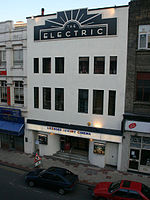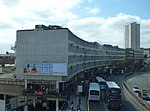St Jude's Church, Birmingham
1846 establishments in EnglandBuildings and structures demolished in 1971Church of England church buildings in Birmingham, West MidlandsChurches completed in 1851Demolished churches in Birmingham, West Midlands
St Jude's Church, Birmingham was a parish church in the Church of England in Birmingham.
Excerpt from the Wikipedia article St Jude's Church, Birmingham (License: CC BY-SA 3.0, Authors).St Jude's Church, Birmingham
Hill Street, Birmingham Digbeth
Geographical coordinates (GPS) Address Nearby Places Show on map
Geographical coordinates (GPS)
| Latitude | Longitude |
|---|---|
| N 52.476138888889 ° | E -1.8995 ° |
Address
Hill Street
Hill Street
B5 4AN Birmingham, Digbeth
England, United Kingdom
Open on Google Maps









